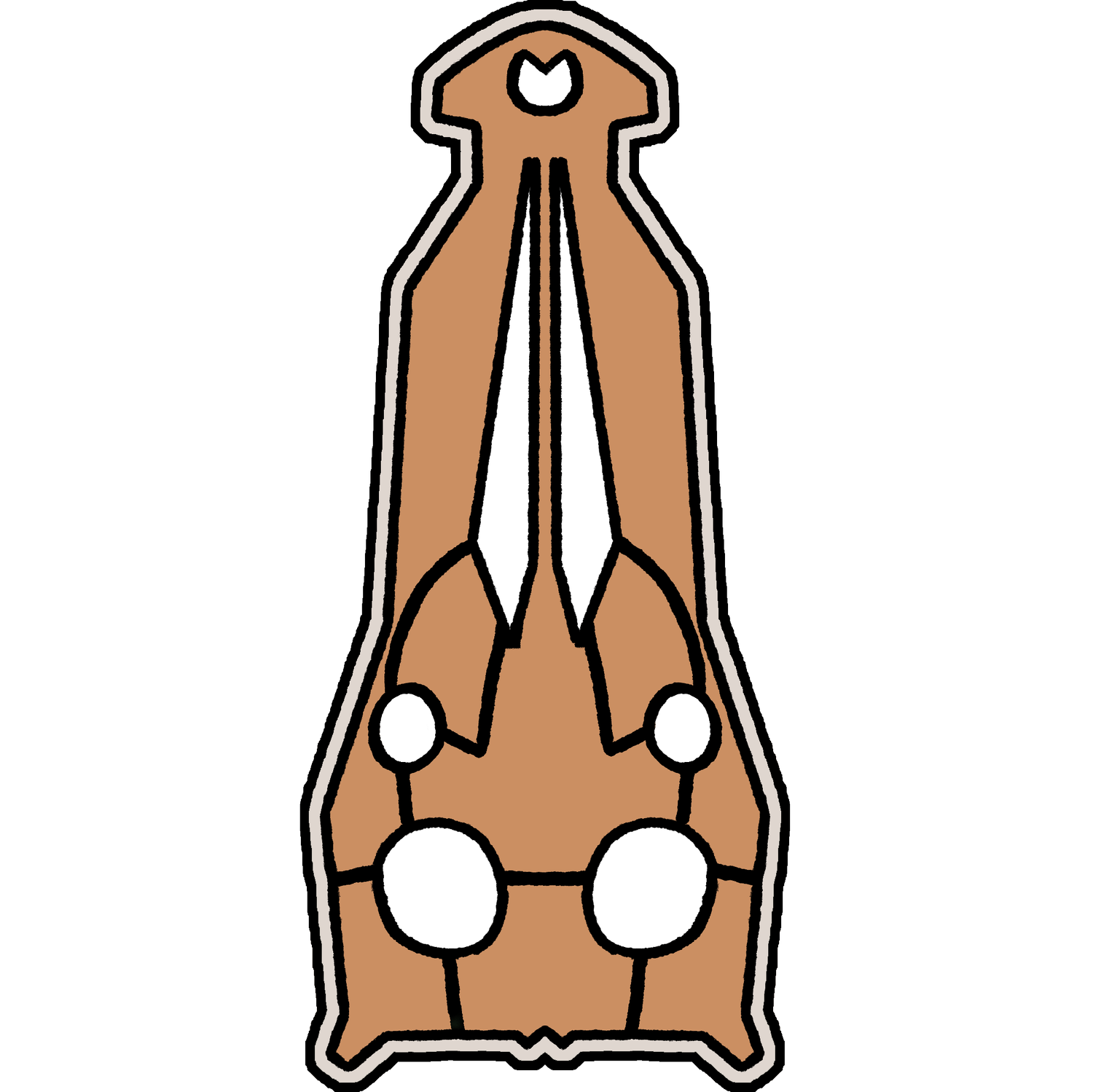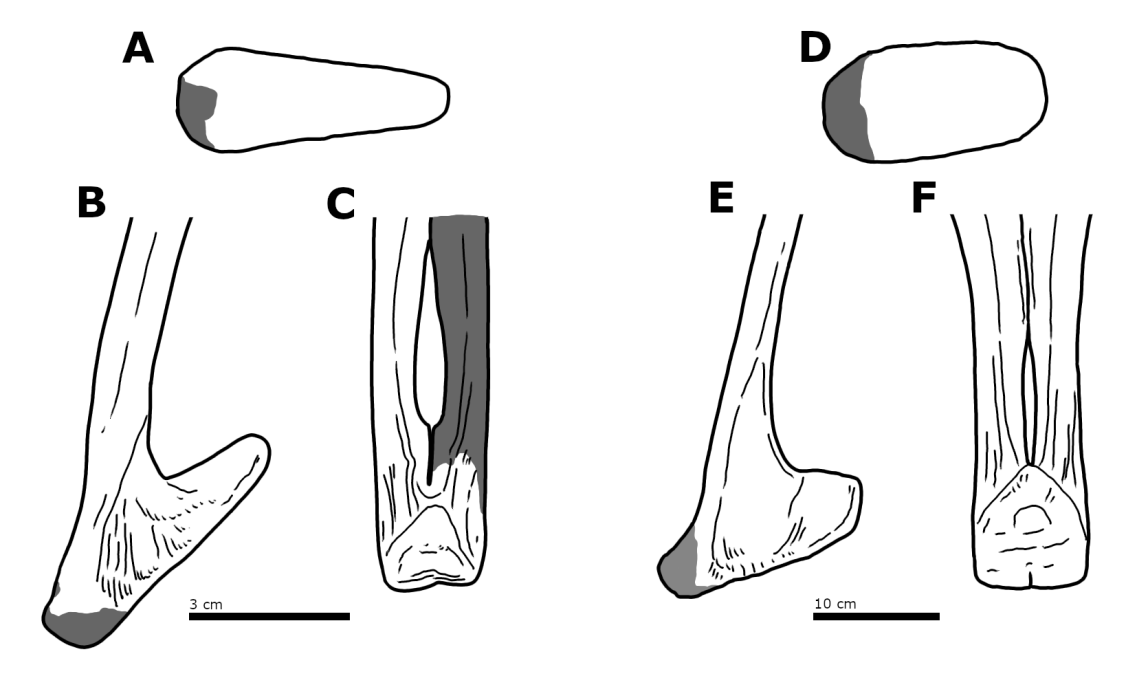Obscure remains from the UK
Wessex Formation Pt.1
In recent years, the Wessex formation outcrops along the coast of the Isle of Wight have detailed the sheer diversity of fossil taxa which once roamed the Early Cretaceous area. Many of these new remains have been described, such as the spinosaur material now referred to Ceratosuchops and Riparovenator.
From doing some digging, I wanted to examine a few of the more interesting remains, some of which have yet to be properly described (or may never be, unfortunately).
SAUROPODS
“The Barnes High sauropod”.
Silhouette is based on Brachiosaurus by BrickSmashTV (Gunnar Bivens)
THE BARNES HIGH SAUROPOD
Remains of the “Barnes High Sauropod” (catalogued as MIWG BP001), well, at least what’s on display, are pictured to the left - there is probably more known material, as the specimen is reportedly 40% complete. This Sauropod specimen is the most complete from the Wessex formation, and one of the most complete sauropods from the UK.
The specimen has had a convoluted history, with the specimen being excavated by the privately run Dinosaur Farm museum which operates nearby. For as long as I can remember, the specimen has been on display on one of the walls of the main hall in the Dinosaur Isle Museum, however it has not been available for study and thus its affinities are not certain. It has previously been tentatively assigned to the genus Eucamerotus, though this has been questioned: Darren Naish suggested that there “are clear differences in the vertebral anatomy of E. foxi and the Barnes High specimen that indicate that they “are unlikely to be conspecific or even congeneric.”
Naish and Martill (2001), as well as Blows (1995) consider the sauropod to be a Brachiosaurid, however Manion et al. (2011) regard it as a basal titanosauriform of uncertain affinities as the animal has not been properly studied (“pending phylogentic analysis”)
The proportions of the hindlimb in comparison to the forelimb would suggest a Brachiosaurid identification, and I’d even go to the extent that the remains on display show a certain resemblance to the Brachiosaurid Vouivria damparisensis (particularly the scapula), though this is merely based on the larger external appearance.
MIWG.2010.20
One of the more recent sauropod discoveries is the specimen MIWG.2010.20 (or IWCMS.2010.20). The specimen doesn’t just consist of a foot, there is more hindlimb material, including ribs and even apparent stomach contents - truly an important specimen. As far as I know, this specimen isn’t privately owned and is awaiting description (if it isn’t undergoing it already).
Notice those really long, thin unguals - seems very distinct from many other groups. Perhaps this is due to the small size (immature?), or perhaps this is a defining character - from some digging, the only comparable sauropods with similar pedal unguals are titanosaurs. This isn’t the first definitive titanosaur from the formation (“Iuticosaurus” and others) so this is entirely a possibility.
MIWG.2010.20 - traced from image in Dinosaurs of the British Isles (Dean R Lomax). Scale bar is 5 cm
However, this again is just superficial resemblance and a specimen description would allow for a more accurate referral.
THEROPODS
“WESSEX BASAL TETANURAN”
In 2009, Brusatte et al. described the fragmentary remains of a bizarre theropod from the formation, MIWG 6350, known from fragmentary pubes, and a distal portion of the femur.
The theropod was referred to as a basal tetanuran by the authors due to a number of features. However, a pet theory of mine is that the remains here represent a large theropod of the family Noasauridae.
The pubes of Masiakasaurus (A-C) and MIWG 6350 (D-F), scaled for comparison, in distal view (A,D), lateral view (B,E) and posterior (C,F). Scalebar for A-C = 3 cm, for D-F = 10 cm
The defining features used to refer the specimen as a basal tetanuran are also perhaps present in noasaurids, as shown in the figure above: a “slit-like fenestra between the pubic aprons” is also present in the noasaurid Masiakasaurus (above). The other character is presence of a femoral extensor groove - which I am unaware if this is present in noasaurids or not. However, many traditionally tetanuran characteristics are present in nosaurids, and many noasaurids have previously been assigned to various other taxonomic groups. For example, Deltadromeus (a large noasaurid, of similar proportion to MIWG 6350) has had a convoluted history from a coelurosaur to an allosauroid alongside close relative Gualicho. Another noasaurid, Afromimus, was also originally assigned as an ornithomimosaur, a group which shares many convergent traits with Noasauridae (Gualicho has also sometimes been recovered as an ornithomimosaur).
Whatever the specimen represents, it is definitely distinct from other theropod genera from the Wessex formation such as Neovenator and the resident spinosaurs. It would be interesting if my little pet theory comes to reality, and I would love to get the chance to work on this specimen in the future.
I’d definitely like to cover more interesting specimens, so this is part 1 of hopefully many more, probably covering other UK formations too.
Dan Folkes, 04/04/2022



